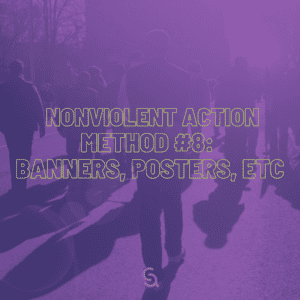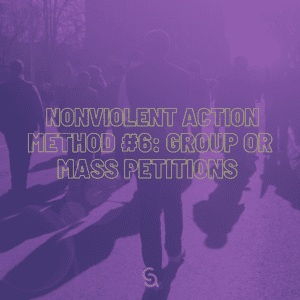 Removal of Signs and Placemarks
Removal of Signs and Placemarks
This technique involves removing, altering or replacing street signs, public transportation signs, and other placemarkers. Doing so can temporarily mislead, hinder or delay the movement of troops or foreign policemen, with both practical and psychological impacts.
In 1968, in response to reforms within the Czech Communist Party, the Soviet Union invaded Czechoslovakia—prompting mass nonviolent resistance. One of the tactics used by demonstrators was to create confusion by “removing” (in this case, painting over) their own street signs.
(You can read more about the different methods of nonviolent protest in Gene Sharp’s book The Politics of Nonviolent Action. Access CSA’s catalogue of Sharp’s methods here, or download the full list of 198 methods here.)


